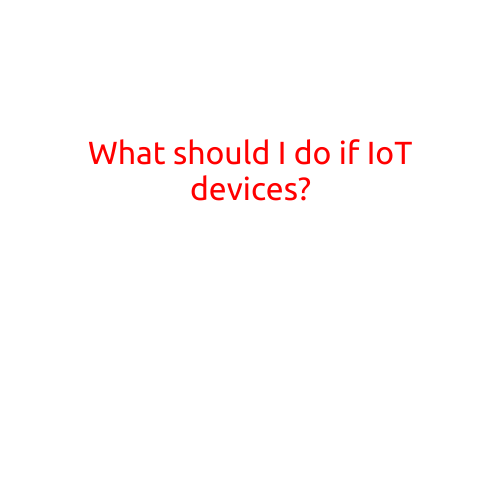
What Should I Do if My IoT Devices are Hacked?
The Internet of Things (IoT) has revolutionized the way we live and work, making it possible to control and monitor various devices remotely. However, with this convenience comes the risk of cyber threats, and IoT devices are no exception. Malicious hackers are increasingly targeting IoT devices, exploiting vulnerabilities to gain access to sensitive information and disrupt our daily lives.
If you suspect that your IoT devices have been hacked, it’s essential to take immediate action to mitigate the risk and restore security. Here are some steps to follow:
1. Disconnect the device
Immediately disconnect the IoT device from the power source or network to prevent further unauthorized access. This will help prevent the hacker from accessing your device and any connected systems.
2. Change passwords
Change the passwords for all IoT devices and connected accounts. Use strong, unique passwords and consider implementing multi-factor authentication to add an extra layer of security.
3. Update firmware
Check for firmware updates and install the latest versions. Many IoT devices have vulnerabilities that can be exploited by hackers. Keeping your firmware up-to-date can help patch these vulnerabilities and improve overall security.
4. Perform a system scan
Run a system scan on your device and connected systems to detect any malware or suspicious activity. You can use antivirus software or a reputable security tool to scan for threats.
5. Isolating the device
If you can’t identify the root cause of the hacking, consider isolating the device from the rest of your network. This will prevent the hacker from moving laterally and accessing other connected systems.
6. Contact the manufacturer
Reach out to the manufacturer or supplier of the IoT device for assistance. They may be able to provide guidance on how to resolve the issue, provide software updates, or offer guarantees.
7. Monitor your devices
Regularly monitor your IoT devices for suspicious activity, such as unusual login attempts or unusual network traffic. Set up alerts and notifications to stay informed about any potential security threats.
8. Consider professional help
If you’re not confident in your ability to resolve the issue or if the hacking is causing significant disruption to your daily life, consider seeking the help of a cybersecurity professional. They can help you contain the breach, identify vulnerabilities, and provide recommendations for improving security.
Additional Tips
- Always use strong, unique passwords for all IoT devices and connected accounts.
- Keep your IoT devices updated with the latest firmware and software.
- Use virtual private networks (VPNs) to encrypt your internet connection and protect your devices.
- Implement a segmented network to isolate IoT devices from other connected systems.
- Consider using IoT-specific security solutions, such as intrusion detection systems or endpoint security software.
By following these steps and tips, you can help minimize the risk of IoT device hacking and ensure your devices remain secure and functional. Remember, cyber security is an ongoing process, and it’s essential to stay vigilant and proactive in protecting your devices and data.





